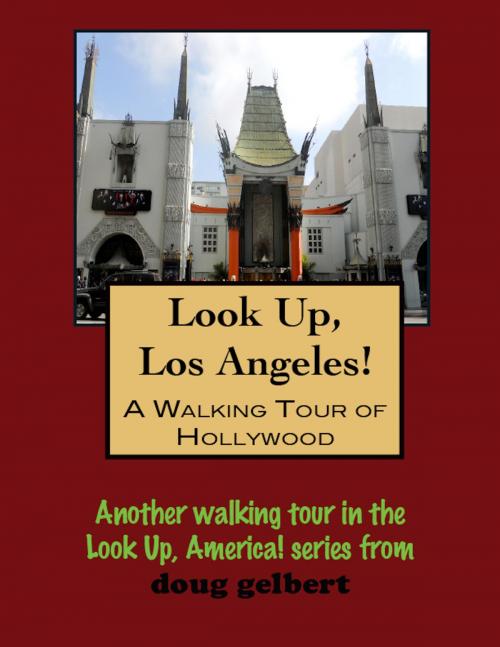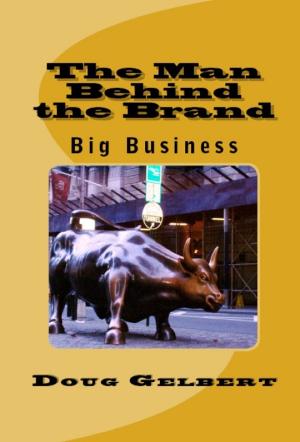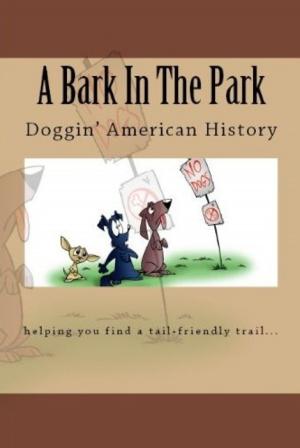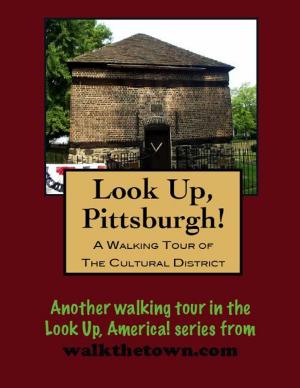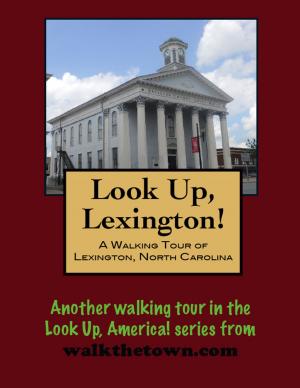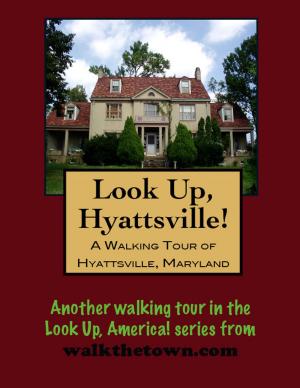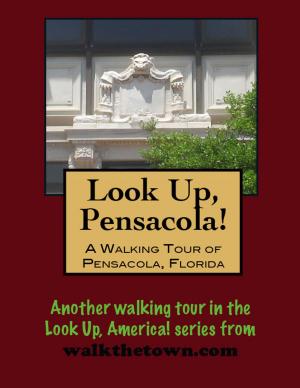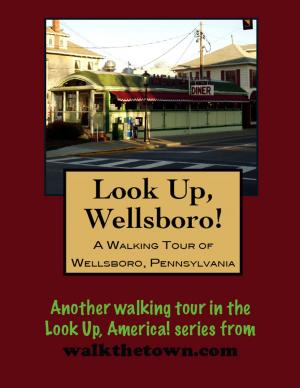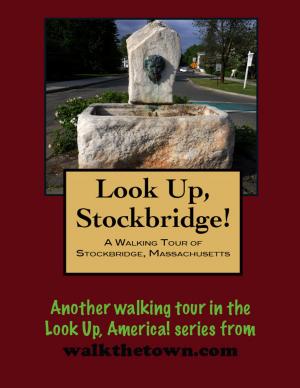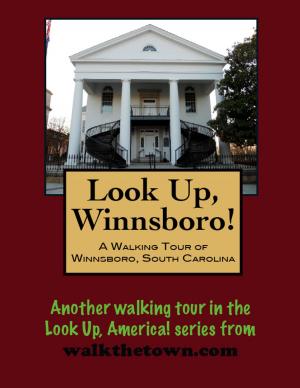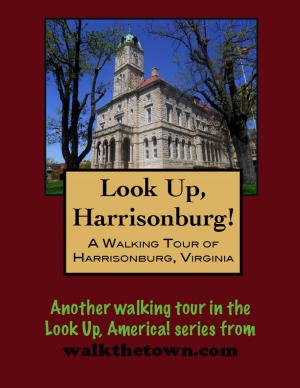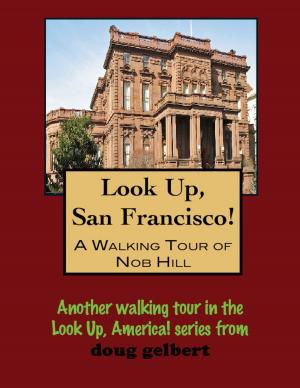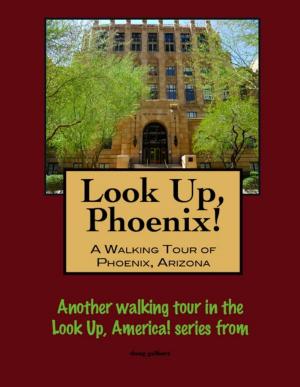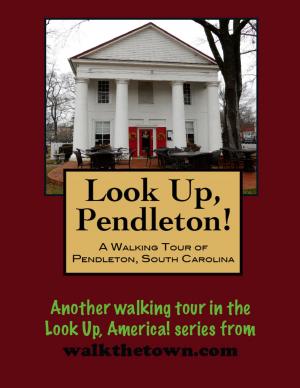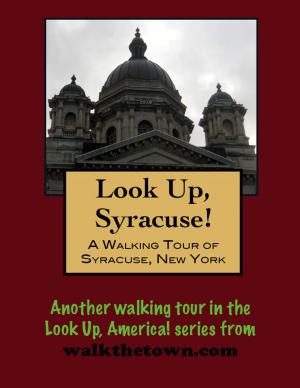Look Up, Hollywood! A Walking Tour of Hollywood, California
Nonfiction, Travel, United States, West, History, Americas| Author: | Doug Gelbert | ISBN: | 9781476105062 |
| Publisher: | Doug Gelbert | Publication: | June 22, 2012 |
| Imprint: | Smashwords Edition | Language: | English |
| Author: | Doug Gelbert |
| ISBN: | 9781476105062 |
| Publisher: | Doug Gelbert |
| Publication: | June 22, 2012 |
| Imprint: | Smashwords Edition |
| Language: | English |
There is no better way to see America than on foot. And there is no better way to appreciate what you are looking at than with a walking tour. Whether you are preparing for a road trip or just out to look at your own town in a new way, a downloadable walking tour from walkthetown.com is ready to explore when you are.
Each walking tour describes historical and architectural landmarks and provides pictures to help out when those pesky street addresses are missing. Every tour also includes a quick primer on identifying architectural styles seen on American streets.
The “father” and “mother” of Hollywood were Hobart Johnstone Whitley and Daeida Wilcox Beveridge. Whitley bought the 500-acre E.C. Hurd ranch in the 1880s which he called “Hollywood” from a name the Whitleys had discovered on their honeymoon. Before that the area was know to the scattered ranchers and fruit growers here as the Cahuenga Valley, after the pass in the Santa Monica Mountains immediately to the north.
Harvey Henderson Wilcox was born in New York state in 1832 and his family migrated to Michigan when he was a teen. As an adult he kicked around the Midwest cobbling shoes and trading real estate. In his fifties, after his first wife died in Kansas of tuberculosis, Wilcox married Daeida “Ida” Hartell, a girl more than thirty years his junior and relocated his ranch to southern California, purchasing land for $150 an acre. Wilcox tried farming figs like his neighbors but after a few years he decided to subdivide the land and sell lots for $1,000 each. Ida borrowed her neighbor’s name, which she may have first heard from a seatmate on a train ride from Kansas - or not, and on February 1, 1887 Harvey Wilcox filed a plat of the subdivision with the Los Angeles County Recorder’s office, the first time “Hollywood” appeared on a deed.
Wilcox died in 1891 but his wife led development efforts and was instrumental in establishing much of Hollywood’s civic infrastructure, including the city hall, library, police station, primary school, tennis club, post office, city park, and much of the commercial district. She also donated land for three churches and space for Hollywood’s first theatrical productions. She came to be called the “Mother of Hollywood,” and when Daeida died in 1914, the Los Angeles Times reported that it was Daeida’s dream of beauty that gave world fame to Hollywood.
To the world today Hollywood means movies. The early years of the movie industry were centered around New York City but Thomas Edison’s film patent fees helped send the pioneering studios west. Most didn’t stop until they reached the favorable year-round weather of Southern California. Short films were being made here by 1906 and by 1911 Los Angeles was second only to New York in motion picture production and by 1915 most movies were being made here. Four major film companies – Paramount, Warner Bros., RKO and Columbia – had studios clustered in Hollywood as the formerly somnambulant suburb skyrocketed to international stardom.
In 1910, when the development was mostly fields of grain and citrus trees town officials voted for Hollywood to be annexed into the City of Los Angeles to insure a reliable supply ofwater. In a handful of years that community was unrecognizable. After the movie companies came radio studios then set up shop in Hollywood in the 1930s, television studios in the 1940s and recording studios in the 1950s. Most have since dispersed to neighboring communities, leaving behind more iconic landmarks than any community of similar size and we’ll begin our tour at the most famous intersection in the world...
There is no better way to see America than on foot. And there is no better way to appreciate what you are looking at than with a walking tour. Whether you are preparing for a road trip or just out to look at your own town in a new way, a downloadable walking tour from walkthetown.com is ready to explore when you are.
Each walking tour describes historical and architectural landmarks and provides pictures to help out when those pesky street addresses are missing. Every tour also includes a quick primer on identifying architectural styles seen on American streets.
The “father” and “mother” of Hollywood were Hobart Johnstone Whitley and Daeida Wilcox Beveridge. Whitley bought the 500-acre E.C. Hurd ranch in the 1880s which he called “Hollywood” from a name the Whitleys had discovered on their honeymoon. Before that the area was know to the scattered ranchers and fruit growers here as the Cahuenga Valley, after the pass in the Santa Monica Mountains immediately to the north.
Harvey Henderson Wilcox was born in New York state in 1832 and his family migrated to Michigan when he was a teen. As an adult he kicked around the Midwest cobbling shoes and trading real estate. In his fifties, after his first wife died in Kansas of tuberculosis, Wilcox married Daeida “Ida” Hartell, a girl more than thirty years his junior and relocated his ranch to southern California, purchasing land for $150 an acre. Wilcox tried farming figs like his neighbors but after a few years he decided to subdivide the land and sell lots for $1,000 each. Ida borrowed her neighbor’s name, which she may have first heard from a seatmate on a train ride from Kansas - or not, and on February 1, 1887 Harvey Wilcox filed a plat of the subdivision with the Los Angeles County Recorder’s office, the first time “Hollywood” appeared on a deed.
Wilcox died in 1891 but his wife led development efforts and was instrumental in establishing much of Hollywood’s civic infrastructure, including the city hall, library, police station, primary school, tennis club, post office, city park, and much of the commercial district. She also donated land for three churches and space for Hollywood’s first theatrical productions. She came to be called the “Mother of Hollywood,” and when Daeida died in 1914, the Los Angeles Times reported that it was Daeida’s dream of beauty that gave world fame to Hollywood.
To the world today Hollywood means movies. The early years of the movie industry were centered around New York City but Thomas Edison’s film patent fees helped send the pioneering studios west. Most didn’t stop until they reached the favorable year-round weather of Southern California. Short films were being made here by 1906 and by 1911 Los Angeles was second only to New York in motion picture production and by 1915 most movies were being made here. Four major film companies – Paramount, Warner Bros., RKO and Columbia – had studios clustered in Hollywood as the formerly somnambulant suburb skyrocketed to international stardom.
In 1910, when the development was mostly fields of grain and citrus trees town officials voted for Hollywood to be annexed into the City of Los Angeles to insure a reliable supply ofwater. In a handful of years that community was unrecognizable. After the movie companies came radio studios then set up shop in Hollywood in the 1930s, television studios in the 1940s and recording studios in the 1950s. Most have since dispersed to neighboring communities, leaving behind more iconic landmarks than any community of similar size and we’ll begin our tour at the most famous intersection in the world...
